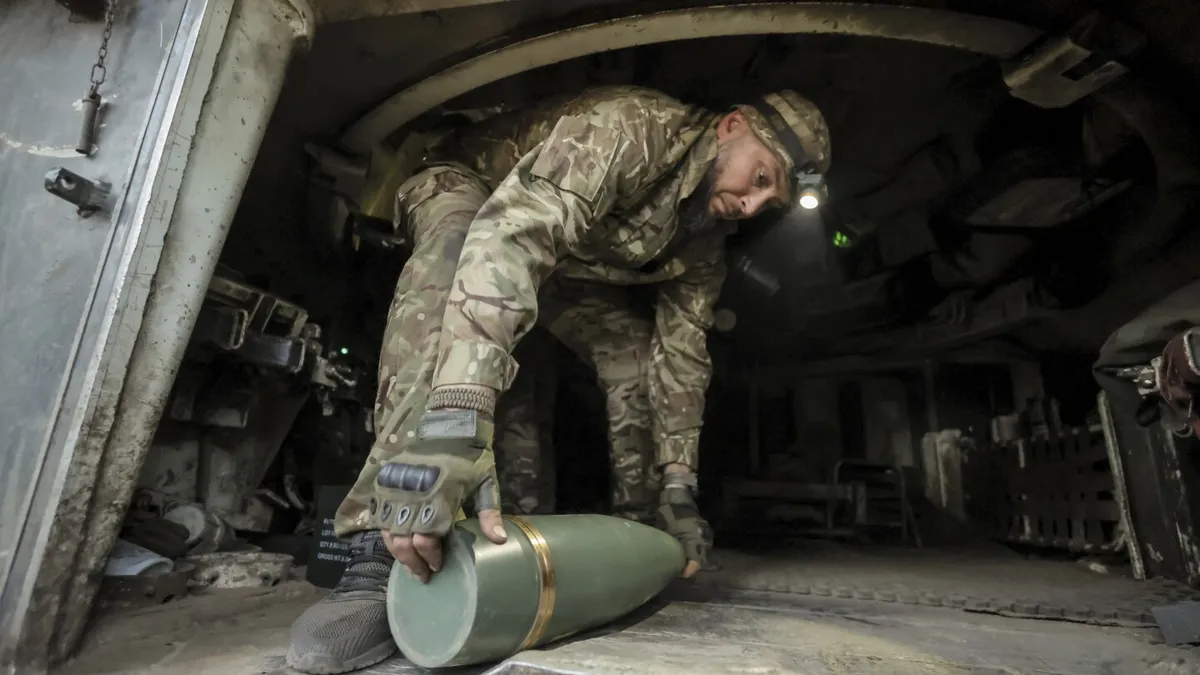
In a bold move, President Donald Trump has issued an ultimatum to Russia, demanding that it accepts a peace deal regarding the ongoing conflict in Ukraine within the next 50 days. Failure to comply with this demand could result in severe sanctions on Russia’s energy exports. This ultimatum provides the Kremlin with additional time to intensify its summer offensive, although the fierce resistance from Ukrainian forces suggests that quick military gains for Russia are unlikely.
President Vladimir Putin has consistently stated that any peace agreement must require Ukraine to withdraw from the four regions that Russia illegally annexed in September 2022. Additionally, he demands that Ukraine renounce its aspirations to join NATO and accept strict limitations on its military capabilities. These conditions have been firmly rejected by Kyiv and its Western allies, further complicating the prospect of a peaceful resolution.
Ukrainian forces face a chronic shortage of manpower and ammunition, which has compelled them to prioritize holding their current positions rather than launching counteroffensives. Despite a renewed Russian military push and a surge of aerial assaults on cities like Kyiv, Ukrainian officials remain skeptical about Russia's ability to secure significant territorial gains within the 50-day timeframe imposed by Trump.
Since the spring, Russian military activities have intensified, resulting in the capture of substantial territory in eastern Ukraine. Russian troops are currently advancing towards the strategic eastern strongholds of Pokrovsk and Kostyantynivka in the Donetsk region. Their objective is to capture surrounding villages to disrupt supply routes and encircle Ukrainian defenders. This slow but persistent offensive has been ongoing for several months, and capturing these strongholds would enable Russia to target key locations like Slovyansk and Kramatorsk, potentially leading to broader control over the entire Donetsk region.
If Russian forces are successful in seizing these strongholds, they could extend their operations further westward into the Dnipropetrovsk region. The regional capital, Dnipro, which is a major industrial hub with a population of nearly 1 million, lies just over 90 miles from current Russian positions. Such an advance could significantly impact Ukrainian morale and provide the Kremlin with additional leverage in any future negotiations.
In the neighboring Luhansk region, Ukrainian forces maintain control over a small area, but Moscow has not prioritized efforts to capture this territory. The situation in the other two annexed regions, Kherson and Zaporizhzhia, remains complex. While Russian troops initially overran the Kherson region, Ukrainian forces have since reclaimed significant areas, forcing a Russian retreat to the eastern bank of the Dnieper River. Any new attempt to cross the river would pose significant challenges, and current assessments suggest that Moscow lacks the capability for such an operation.
Similarly, achieving full control over the Zaporizhzhia region appears to be a daunting task for Russian forces. Recent efforts to establish a 'buffer zone' in northeastern Ukraine's Sumy region have resulted in the capture of several villages. However, Ukrainian forces have successfully halted these advances and continue to maintain a presence at the edge of the neighboring Kursk region.
Military analysts observe that the scale and pace of Russian operations indicate that significant gains are out of reach. As Ukrainian forces feel the strain of being outnumbered and outgunned, they rely heavily on drone technology to counteract the slow Russian offensive. Both sides utilize drones extensively to track troop movements and conduct targeted attacks, leading to a stalemate in many areas.
Russian military commentators acknowledge that Ukraine's proficiency with drones makes any rapid territorial gains by Moscow improbable. Instead, Russia appears to be employing a strategy of "a thousand cuts," aiming to exhaust Ukrainian forces through relentless pressure across various fronts. According to military analyst Sergei Poletayev, the goal is to weaken Ukraine's defense capabilities to the point where strategic advances become feasible.
On the front lines, Ukrainian troops express frustration over delays in U.S. military assistance, which have forced them to ration ammunition and scale back operations in light of intensified Russian attacks. The United States has announced plans to sell weapons to NATO allies in Europe, enabling them to provide critical military support to Ukraine. This includes the much-needed Patriot air defense systems, which are a top priority for Ukrainian defense efforts.
Analysts emphasize that accelerated weapons shipments from European allies are crucial for Ukraine to withstand the Russian onslaught. As the rate of Russian advances increases, experts like Jack Watling of the Royal United Services Institute warn that Ukraine's armed forces will face mounting pressure without timely and adequate support from Western nations.
In conclusion, as the conflict continues to unfold, the interplay of military strategy, international diplomacy, and the provision of Western support will significantly shape the future of Ukraine and its fight against Russian aggression.